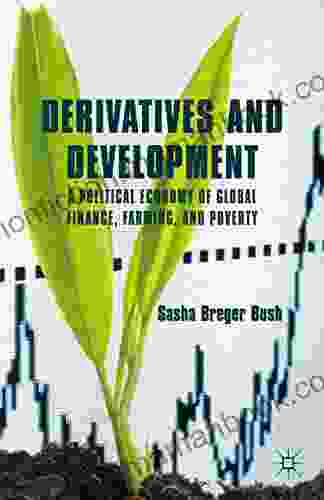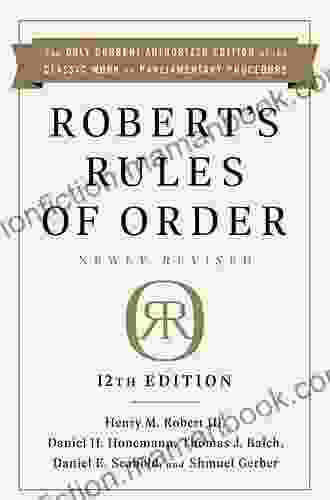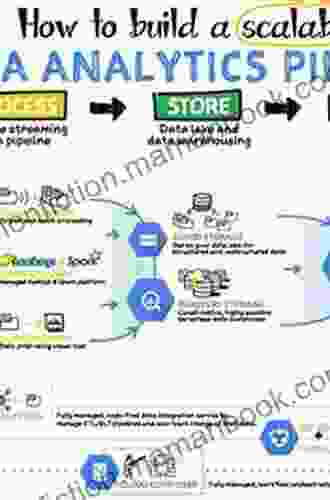A Comprehensive Guide to Applied Engineering Economics Using Excel

Applied Engineering Economics is a crucial aspect of engineering practice that involves the analysis and evaluation of financial implications associated with engineering projects and decisions. Engineers play a significant role in allocating resources and making choices that can have far-reaching financial consequences. To make informed decisions, engineers must be proficient in the principles and techniques of Applied Engineering Economics.
4.3 out of 5
| Language | : | English |
| File size | : | 14444 KB |
| Text-to-Speech | : | Enabled |
| Screen Reader | : | Supported |
| Enhanced typesetting | : | Enabled |
| Word Wise | : | Enabled |
| Print length | : | 439 pages |
Excel has become an indispensable tool for engineers due to its robust capabilities in financial analysis and decision-making. This guide will provide a comprehensive overview of how to apply Engineering Economics concepts using Excel, empowering engineers with the knowledge and skills to excel in this critical area.
Discounted Cash Flow Analysis
Discounted Cash Flow (DCF) analysis is a fundamental method in Applied Engineering Economics used to evaluate the financial viability of projects and investments. It involves considering the present value of future cash flows, taking into account the time value of money and the effects of inflation and interest rates.
Excel provides powerful functions for DCF analysis, such as the Net Present Value (NPV),Internal Rate of Return (IRR),and Profitability Index (PI). These functions enable engineers to compare different investment options and make decisions based on their financial attractiveness.
Net Present Value (NPV)
NPV represents the present value of the net cash inflows minus the initial investment. A positive NPV indicates a profitable investment, while a negative NPV suggests it is financially unattractive. Using Excel, engineers can calculate NPV using the NPV function, which takes into account the discount rate and the series of future cash flows.
Internal Rate of Return (IRR)
IRR is the discount rate that equates the NPV to zero. It represents the annualized rate of return that the investment is expected to generate. Excel's IRR function can be used to calculate the IRR of an investment, providing insights into its profitability and risk level. A higher IRR indicates a more attractive investment.
Profitability Index (PI)
PI is a ratio that measures the present value of future cash inflows divided by the initial investment. It provides a quick estimate of the profitability of an investment. A PI greater than 1 indicates a favorable investment opportunity. Excel provides the PI function to calculate the Profitability Index for a given set of cash flows.
Break-Even Analysis
Break-even analysis is used to determine the point at which a project or investment generates enough revenue to cover its costs. It is essential for assessing the financial feasibility of a project and predicting its payback period.
Excel provides tools to construct break-even charts and perform break-even analysis. By plotting total revenue and total costs, engineers can visualize the break-even point and make informed decisions about production levels, pricing strategies, and investment decisions.
Sensitivity Analysis
Sensitivity analysis is a technique used to assess the impact of changes in assumptions and parameters on the financial outcome of a project or investment. It helps engineers identify the factors that have the most significant impact and manage project risks.
Excel provides tools for conducting sensitivity analysis, such as the Data Table and Scenario Manager. These tools allow engineers to vary input variables and analyze the resulting changes in financial metrics, enabling them to make more robust decisions and mitigate potential risks.
Decision Making
The ultimate goal of Applied Engineering Economics is to support decision-making. The techniques described above provide engineers with a framework for evaluating financial implications and making informed choices.
By considering the NPV, IRR, PI, break-even analysis, and sensitivity analysis, engineers can compare different alternatives, assess their financial viability, and make recommendations based on sound financial principles. Excel's capabilities streamline this process and enable engineers to make data-driven decisions with confidence.
Applied Engineering Economics is an essential discipline for engineers who aspire to make optimal financial decisions and contribute to the success of their projects and organizations. Excel is a powerful tool that empowers engineers with the capabilities to analyze cash flows, perform break-even analysis, conduct sensitivity analysis, and make informed choices.
By mastering the concepts and techniques presented in this guide, engineers can gain a competitive edge in their field and become invaluable assets to their teams and organizations.
4.3 out of 5
| Language | : | English |
| File size | : | 14444 KB |
| Text-to-Speech | : | Enabled |
| Screen Reader | : | Supported |
| Enhanced typesetting | : | Enabled |
| Word Wise | : | Enabled |
| Print length | : | 439 pages |
Do you want to contribute by writing guest posts on this blog?
Please contact us and send us a resume of previous articles that you have written.
 Top Book
Top Book Novel
Novel Fiction
Fiction Nonfiction
Nonfiction Literature
Literature Paperback
Paperback Hardcover
Hardcover E-book
E-book Audiobook
Audiobook Bestseller
Bestseller Classic
Classic Mystery
Mystery Thriller
Thriller Romance
Romance Fantasy
Fantasy Science Fiction
Science Fiction Biography
Biography Memoir
Memoir Autobiography
Autobiography Poetry
Poetry Drama
Drama Historical Fiction
Historical Fiction Self-help
Self-help Young Adult
Young Adult Childrens Books
Childrens Books Graphic Novel
Graphic Novel Anthology
Anthology Series
Series Encyclopedia
Encyclopedia Reference
Reference Guidebook
Guidebook Textbook
Textbook Workbook
Workbook Journal
Journal Diary
Diary Manuscript
Manuscript Folio
Folio Pulp Fiction
Pulp Fiction Short Stories
Short Stories Fairy Tales
Fairy Tales Fables
Fables Mythology
Mythology Philosophy
Philosophy Religion
Religion Spirituality
Spirituality Essays
Essays Critique
Critique Commentary
Commentary Glossary
Glossary Bibliography
Bibliography Index
Index Table of Contents
Table of Contents Preface
Preface Introduction
Introduction Foreword
Foreword Afterword
Afterword Appendices
Appendices Annotations
Annotations Footnotes
Footnotes Epilogue
Epilogue Prologue
Prologue Dr Howard Rankin
Dr Howard Rankin Clay Jonas
Clay Jonas Jennifer Chang
Jennifer Chang Sophie Haydon
Sophie Haydon David Brunner
David Brunner Isabel Allende
Isabel Allende Debra Dunbar
Debra Dunbar Christopher Charlton
Christopher Charlton Adam Sinicki
Adam Sinicki Mark Ryan
Mark Ryan Kay Gardner
Kay Gardner Sierra Simone
Sierra Simone Sarah Amber
Sarah Amber Kal Wagenheim
Kal Wagenheim Patrick Hasburgh
Patrick Hasburgh Karen Szymusiak
Karen Szymusiak Nico Tortorella
Nico Tortorella Elizabeth Muriel
Elizabeth Muriel Matt Ridley
Matt Ridley Don Padilla
Don Padilla
Light bulbAdvertise smarter! Our strategic ad space ensures maximum exposure. Reserve your spot today!

 Raymond ParkerNavigating the Delicate Balance of International Equilibrium: A Comprehensive...
Raymond ParkerNavigating the Delicate Balance of International Equilibrium: A Comprehensive... Miguel NelsonFollow ·8.2k
Miguel NelsonFollow ·8.2k Curtis StewartFollow ·14.2k
Curtis StewartFollow ·14.2k Darren NelsonFollow ·14.9k
Darren NelsonFollow ·14.9k Preston SimmonsFollow ·18.5k
Preston SimmonsFollow ·18.5k Sean TurnerFollow ·10.1k
Sean TurnerFollow ·10.1k Dawson ReedFollow ·6.7k
Dawson ReedFollow ·6.7k Paul ReedFollow ·12.4k
Paul ReedFollow ·12.4k Anton FosterFollow ·10.3k
Anton FosterFollow ·10.3k

 Steve Carter
Steve CarterUnveiling the Rich Theatrical Tapestry of Russia: A...
Origins and Early...

 Frank Butler
Frank ButlerOn Talking Terms With Dogs: Calming Signals and the...
For centuries, dogs have...

 Leo Tolstoy
Leo TolstoyThe Inside Guide to Applying and Succeeding in...
Applying to...

 Cole Powell
Cole PowellThe Political Economy of Global Finance, Farming and...
The global...
4.3 out of 5
| Language | : | English |
| File size | : | 14444 KB |
| Text-to-Speech | : | Enabled |
| Screen Reader | : | Supported |
| Enhanced typesetting | : | Enabled |
| Word Wise | : | Enabled |
| Print length | : | 439 pages |














